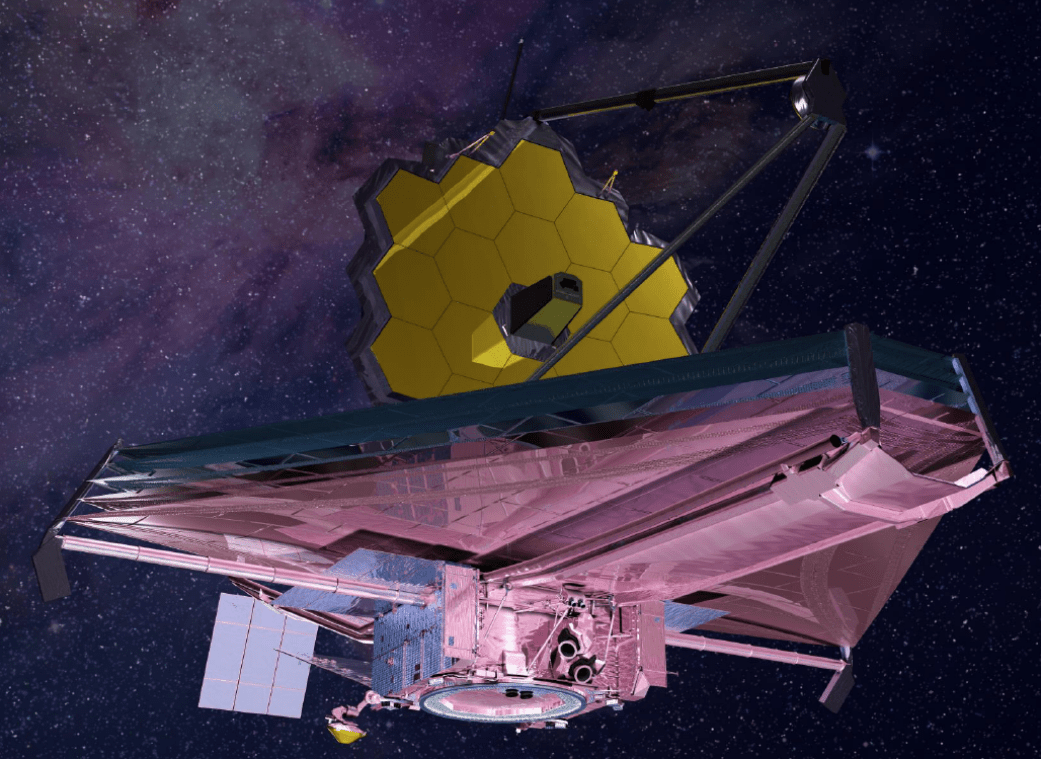If you felt a little more tension – and perhaps more goosebumps — in the Universe today, it’s probably because the James Webb Space Telescope’s sunshield is now completely and successfully deployed! All five layers of the sunshield have been fully extended and “tensioned” into the final taut, kite-shaped configuration. This is a huge accomplishment (and huge relief) for the entire international Webb mission
“This has been many years in the making, and is a really big moment for the entire team,” said the JWST mission operations manager after the final events to tension and latch the sunshield were confirmed. “There’s nothing cooler in space than JWST!”
NASA livestreamed events for the final sunshield tensioning, showing the events in Mission Operations Center at the Space Telescope Science Institute in Baltimore, Maryland. The conversations on the communications loop provided an inside look at the intricate operation taking place remotely, thousands of kilometers/miles from Earth.
The sunshield deployment has long been recognized as one of the most difficult and nail-biting parts of deployment for Webb. Despite the years of development and testing, it is incredibly difficult to predict exactly how the Kepton layers of the shield and all the intricate cabling will move in the harsh conditions of space. With this success, the entire team is understandably overjoyed.
The final sunshield deployment confirmation came 10 days after JWST left Earth. The fifth and final layer of the 21 by 14 meters (70 by 47 ft) sunshade was pulled taut, as the telescope was about 916,000 km (570,000 miles) away.

“The membrane tensioning phase of sunshield deployment is especially challenging because there are complex interactions between the structures, the tensioning mechanisms, the cables and the membranes,” said James Cooper, NASA’s Webb sunshield manager, at Goddard Space Flight Center. “This was the hardest part to test on the ground, so it feels awesome to have everything go so well today.”
There is roughly a .5 meters (a foot and a half) between the layers, with about 2 meters (6 feet) in total height of the sunshield, although the size varies in different spots across the sunshield.
Yesterday, January 3, Webb engineers commenced tensioning of the first three layers. They originally planned to do just one layer yesterday, but it all went so well they decided to continue. In all, the tensioning process for the first three layers took just over five and a half hours.
“Yesterday we did not expect that we were going to get through the first three layers,” explained Keith Parrish, Webb’s Commissioning Manager, during the live-stream on NASA TV. “The first layer went so well, and we almost had to hold our engineers back! But our engineers always make sure the conditions are right, and they were eager to go, especially this morning to get the last two layers completed.”
JWST project manager Bill Ochs told reporters yesterday that when the sunshield was fully deployed, the team will have retired between 70 to 75 percent of 344 single point failures.
On the sunshield itself, 107 pins that held the sunshield material to the telescope structure needed to be released. If just one pin didn’t release, the sunshield layer would have been trapped and the team would have had to go into contingency mode of how to make the sunshield work, albeit sub-optimally. While the Webb team has planned everything for the worst-case scenario, so far, all the deployments have worked in the best possible scenario with everything working perfectly.

Fully deployed, the sunshield will protect the telescope from the Sun’s radiation. It will reach a maximum of approximately 388K, approximately 233 degrees F, while keeping the instruments cold at a minimum of approximately 36K or around -394 degrees F.
The successful deployment of the sunshield means the Webb team can now proceed to the next nail-biting event: deploying the secondary mirror, a very important step. Later this week, engineers expect to be able to fold out the side wings on the folded up primary mirror.
After that, 5 1/2 months of setup still remain, including alignment of the telescope optics, and calibration of the science instruments. After that, Webb will deliver its first images.

Find out more details about the sunshield here.
Get the latest updates on Webb at NASA’s Where’s Webb
Find info on more ways to get additional updates here.

